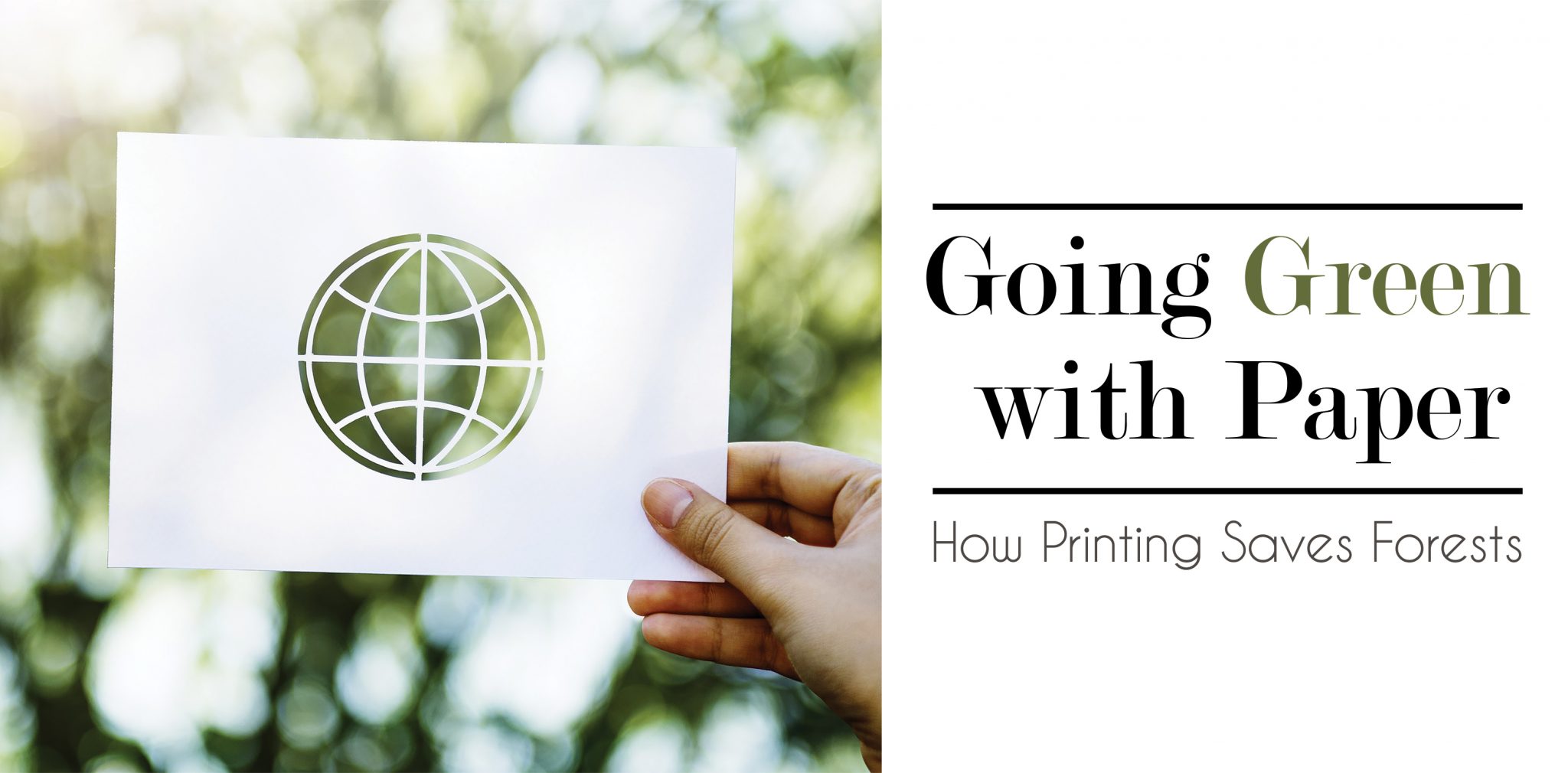Going green works very well for many environmental practices like energy, but not for paper. Actually, refusing to buy paper and other wood products may worsen human impact on the environment. We’ll show you how paper and printing can truly save trees.
The Paperless Myth
Opponents of print believe that going completely paperless will allow decimated forests to regrow and absorb the excess CO2 from our industrialized world. This would be true if those forests belonged to no one and were free to regrow naturally.
However, the farmers and companies that own these forests, having lost revenue from paper, may then be persuaded to sell their land for development. Rather than renewed forests, that land could become an industrial area, a shopping center, or a high-density residential area. This can cause far more damage to the environment overall.
Keeping the land in use for the paper industry ensures the preservation of these forests, and even encourages farmers to keep them growing. In turn, these larger forests help keep our atmosphere clean and our ecosystem diverse.
Technology: Not as Green as You Think
Relying totally on email and computers also isn’t as green as some believe. Even one email leaves a carbon footprint! Now think of all the emails you send and receive every day.
Plus, computers, servers, and routers operate with different energy efficiency levels–including those of the buildings they are housed in. Because clean energy production (hydro, solar, wind) isn’t as widespread, data centers running 24/7 may be powered through coal or other energies. Combined with the necessary power to send and store emails, this creates an even larger carbon footprint.
A Sustainable, Renewable Resource
North America grows more trees than we harvest. Plus, construction, rather than paper, uses the most lumber.
Because paper is made of wood, it is easy to renew and recycle, and it is biodegradable. Electronics, however, don’t have nearly the same lifespan due to changing technology, and they’re rarely recyclable.
Also, it doesn’t take as long as some believe to regrow the fiber needed for a world with paper. The example from twosidesna.org shows that the fiberG for a #10 envelope grows in a mere 0.3 to 1.9 seconds per 100 acres of managed North American forest. Following these findings, a farmer with 100 acres of commercial trees can grow 15.8 million #10 envelopes in one year.
Caring for the environment is still an important goal North Americans should all work towards. But be responsible with your paper, rather than avoiding it entirely. So go ahead: buy books, print flyers, and above all, don’t shun print marketing. Our forests depend on your business.


